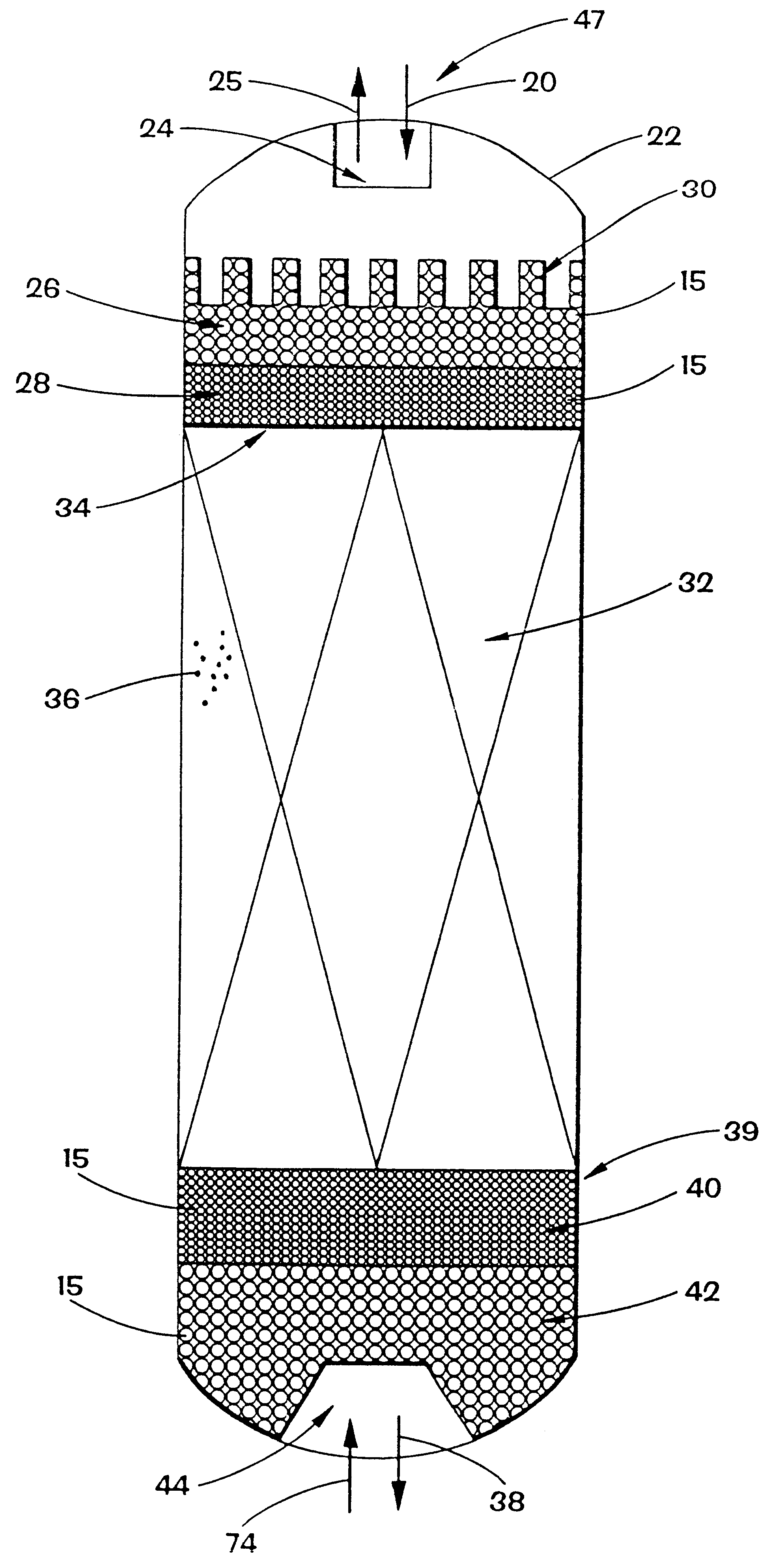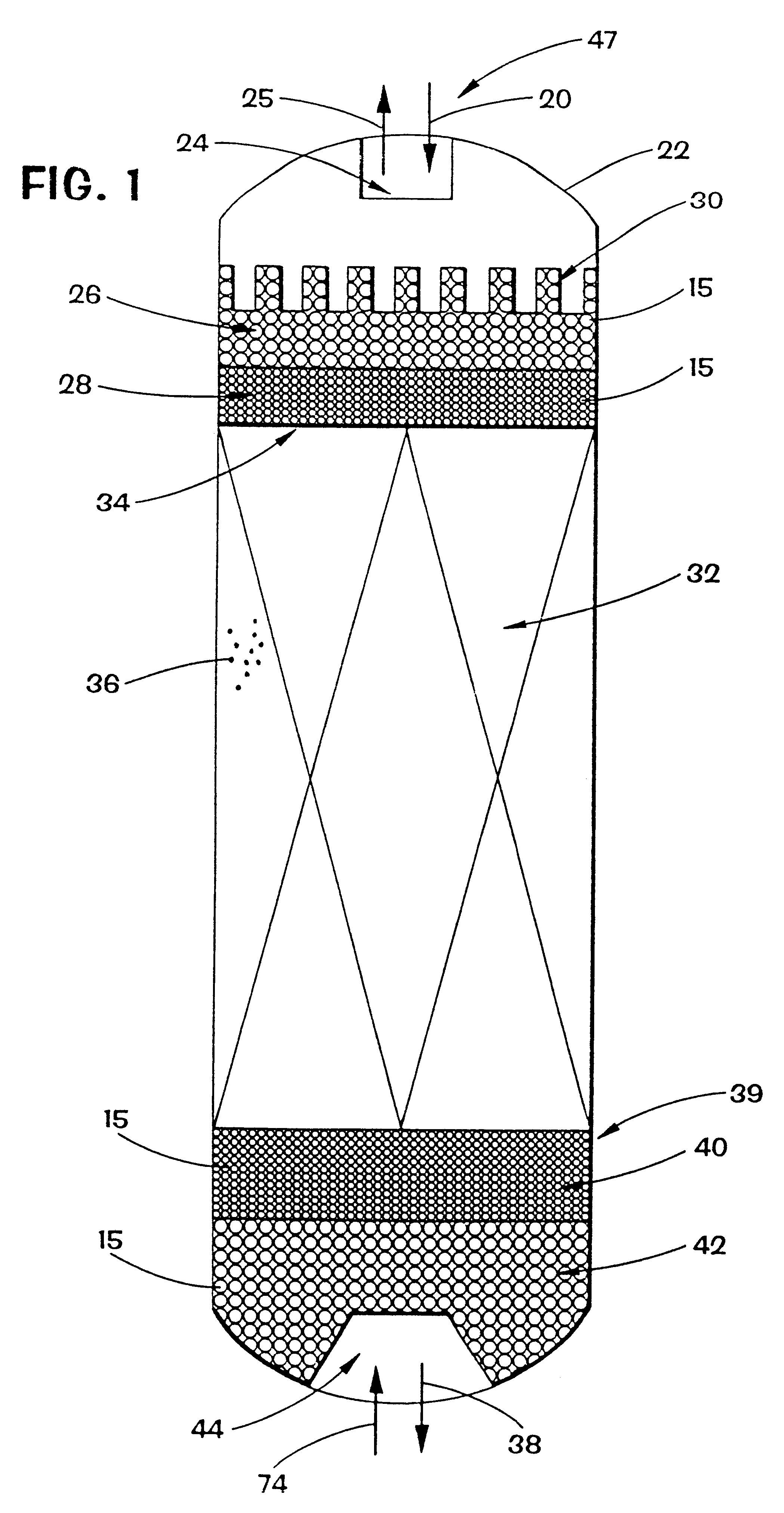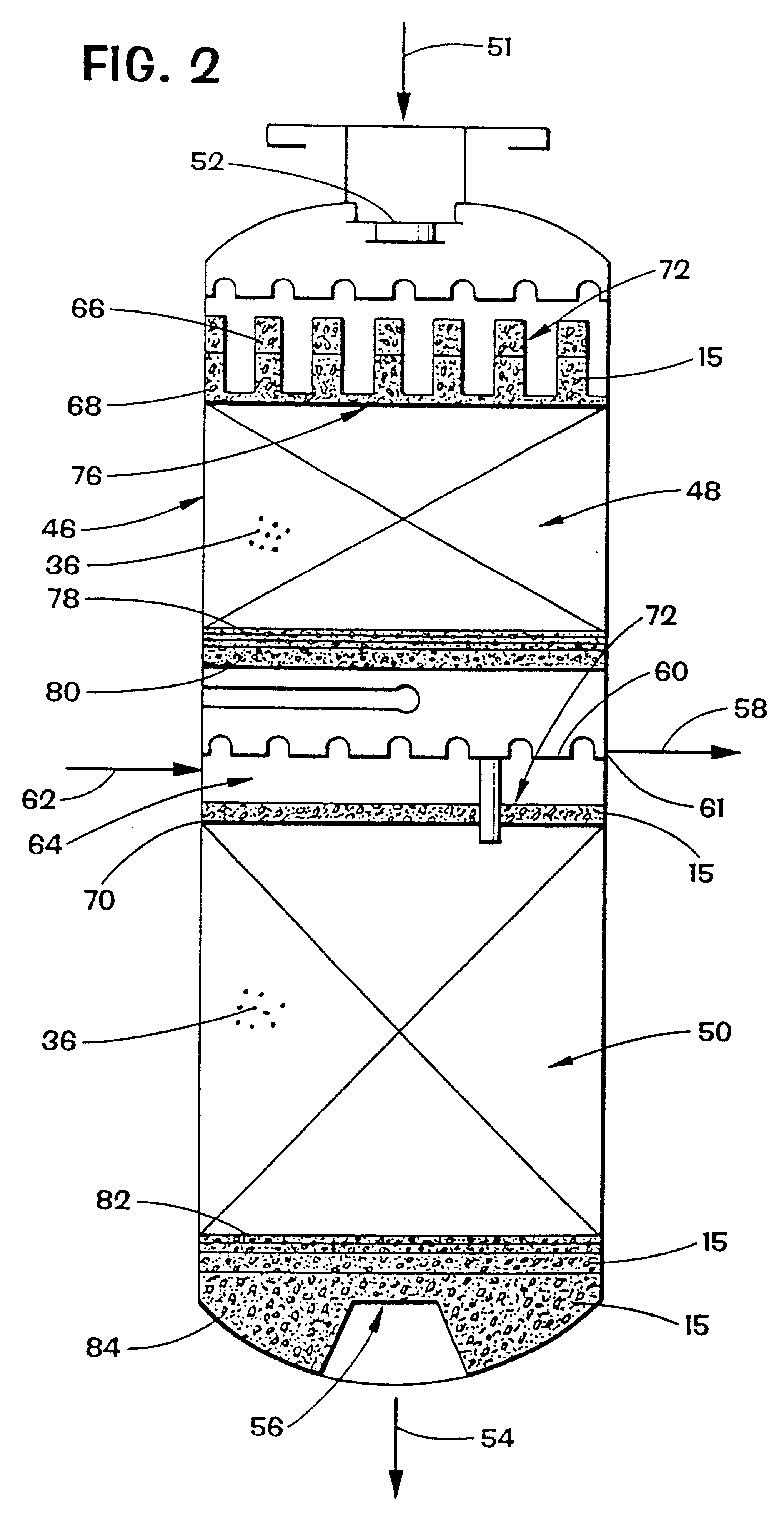Filtration and flow distribution method for chemical reactors
a chemical reactor and flow distribution technology, applied in the direction of physical/chemical process catalysts, combustion types, separation processes, etc., can solve the problems that the filtering prior to the organic-based feed stream entering the reactor may not be helpful in removing these foulants, the catalyst bed fouling, gumming or plugging, etc., to reduce the turbulence, reduce the maldistribution and entry losses, and reduce the turbulence
- Summary
- Abstract
- Description
- Claims
- Application Information
AI Technical Summary
Benefits of technology
Problems solved by technology
Method used
Image
Examples
Embodiment Construction
With reference to FIG. 1, for treatment of an organic-based feed stream a single fixed bed chemical reactor 22 with reticulated ceramic material 15 in the shape of substantially spherical balls 122 (FIG. 11) will be described, although as previously discussed other shapes of the reticulated ceramic material 15 may be used. If the reactor 22 is of a downflow configuration, the contaminated organic-based feed stream 20 will enter the reactor 22 at the inlet 24. The invention may be used in either fixed beds or fluidized bed chemical reactors. Preferably, the present invention is used in one or more fixed beds, in either an upflow or downflow or radial flow configuration. Preferably, the chemical reactors include hydrotreater, hydrorefiner, hydrocracker, reformer, alkylation, isomerization and polymerization reactors. Contaminants typically found in the feed stream include dirt, iron oxide sulfide, asphaltenes, coke fines, catalyst fines, sediments or other entrained foreign particulat...
PUM
| Property | Measurement | Unit |
|---|---|---|
| diameter | aaaaa | aaaaa |
| height | aaaaa | aaaaa |
| diameter | aaaaa | aaaaa |
Abstract
Description
Claims
Application Information
 Login to View More
Login to View More - R&D
- Intellectual Property
- Life Sciences
- Materials
- Tech Scout
- Unparalleled Data Quality
- Higher Quality Content
- 60% Fewer Hallucinations
Browse by: Latest US Patents, China's latest patents, Technical Efficacy Thesaurus, Application Domain, Technology Topic, Popular Technical Reports.
© 2025 PatSnap. All rights reserved.Legal|Privacy policy|Modern Slavery Act Transparency Statement|Sitemap|About US| Contact US: help@patsnap.com



